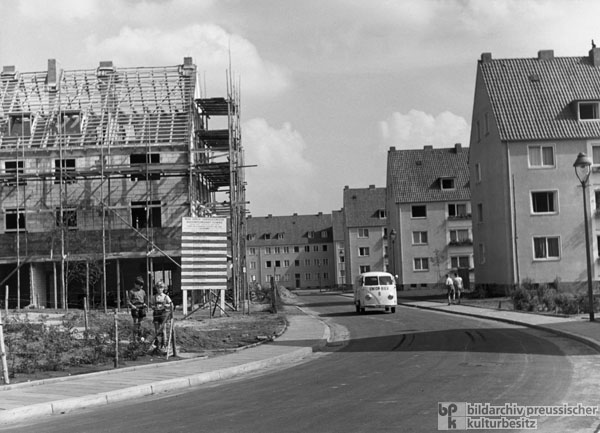













INTRODUCTION | DOCUMENTS | IMAGES | MAPS | EDITOR
|
During the Second World War, between 2.34 and 2.5 million apartments were destroyed on the territory of the Federal Republic. The influx of refugees and expellees created additional demand, which was only partially met by repairing the 500,000 damaged units. In 1950, there was still a shortage of 5-6 million apartments. After the passage of the First Housing Act of 1950, which provided for extensive subsidies for public housing, new construction increased substantially. Whereas only about 218,000 apartments had been built in 1949, the number of units completed on an annual basis rose to around 560,000 by 1955. In the early 1950s, public housing construction accounted for about two-thirds of all new housing. In 1949, Lübeck still lacked 25,000 to 30,000 apartments for its 240,000 to 250,000 residents, 40 percent of whom were refugees and expellees. In 1949, expellees from Silesia, Pomerania, and East and West Prussia founded the New Lübeck-Südholstein Building Society [Neue Lübeck-Südholstein Baugenossenschaft], which was awarded non-profit cooperative status in 1950. The society built more than 2,000 rental apartments in the period up to 1959. As in the East, there was initially little experimentation with new stylistic elements. Most of the buildings were multi-unit structures with pitched roofs up to five stories tall. Photo by Hildegard Dreyer.
© Bildarchiv Preußischer Kulturbesitz / Hildegard Dreyer |
 print version
print version return to image list
return to image list previous image
previous image
